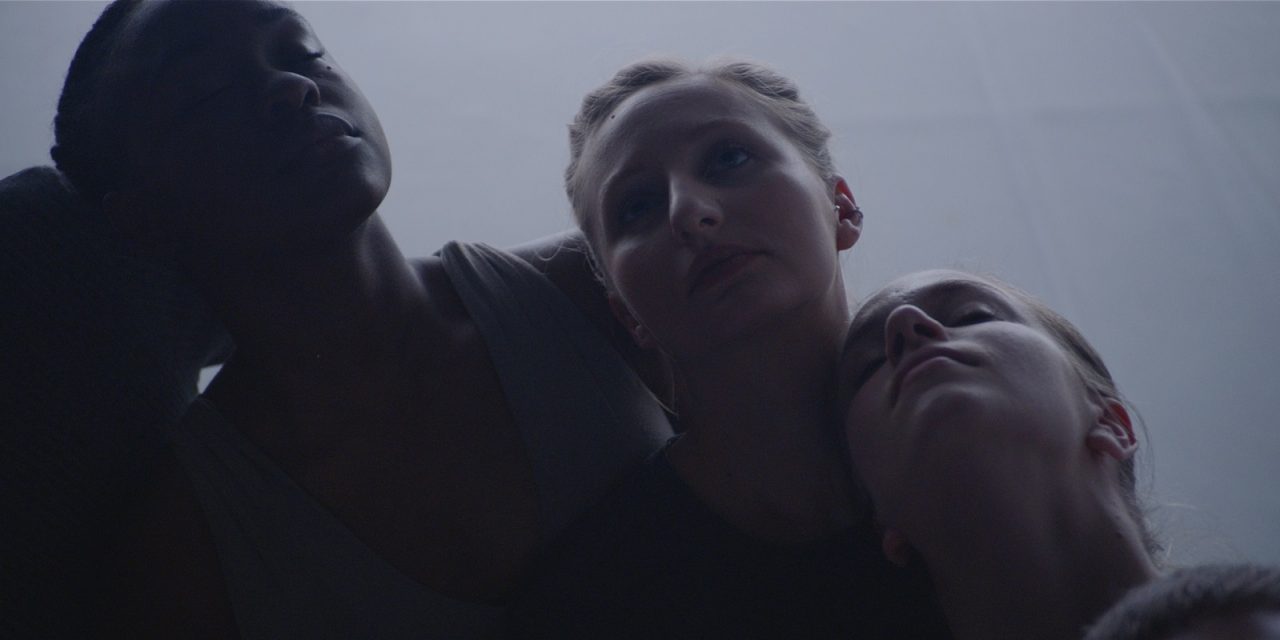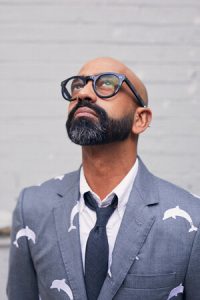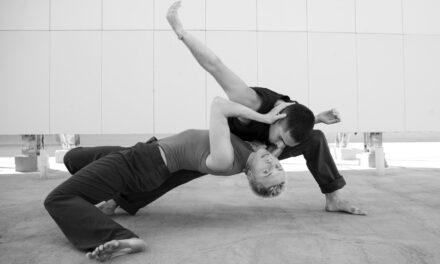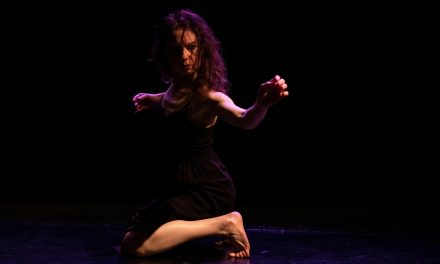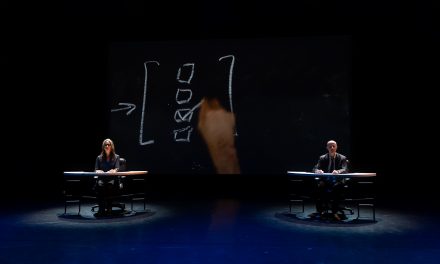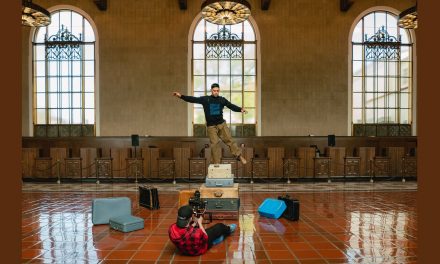Choreographer and visual artist Brendan Fernandes began working with a single dancer to investigate the not so simple act of falling and getting back up on stage. He was exploring ways of making falling not look like a mistake or so stylized that it appeared forced. We all fall. Dancers fall in real life and they sometimes accidentally fall while performing, leaving the audience to wonder if they were injured or if it indeed was meant to be.
While Fernandes was working with with this ballerina who was also trained in contemporary dance, the mass shooting occurred at the Pulse Nightclub in Orlando, Florida where 49 Black and Latinx LGBTQ lives were lost and many more were injured . Suddenly his entire image of someone falling, attempting to get up, being aided rise off the floor, or worse, never getting up suddenly was altered. 49 of those young Latinx individuals would never get off that dance floor alive and the lives of so many others were forever changed.
In 2017, as part of its Friday Nights series, the Getty Museum in Los Angeles presented Fernandes’ performance piece titled Free Fall 49 to honor the one year anniversary of the tragic Pulse Nightclub massacre. The work involved 8 performers, staged on platforms with each repeatedly falling in unison 49 times on given musical cues. Billed as a social dance/performance work, it took the audience a while to realize what exactly was taking place. Indeed, following the final fall, the dancers joined in with the audience to dance.
“It became a kind of metaphor of dancing together, celebrating each other’s bodies – being in close proximity (which is now a challenge) is the celebration and is the sense of freedom.” Fernandes said during a discussion with Joshua Chambers-Letson. Chambers-Letson is a writer and performance theorist who researches and teaches courses in performance studies, critical race theory, political theory, and queer of color critique. He is the author of “After the Party“.
Following the Getty performance, Fernandes continued to reflect on the Pulse tragedy through the mediums of movement sculptures and drawings. One sculpture included 49 crystal hangers designed to represent the 49 people who were fallen at the Pulse Nightclub. “Each crystal hanger was an index for a body” Fernandes said.
But he did not stop there. Recently Fernandes premiered an extremely moving and beautiful film titled Free Fall, for the Camera. Choreographed in collaboration with Hit & Run Dance Productions Inc., Free Fall, for the Camera involves 16 dancers in a somewhat stark studio setting, softened by that addition of white fabric draped walls. The Marley floor alternation between all black and all white, and a very diverse group of dancers dressed in muted shades of gray. Unlike at the Getty Museum, the film has an often haunting music score by Alex Inglizian that emits soulful drones as if one were listening to the mournful sighs of those killed during mass shooting everywhere.
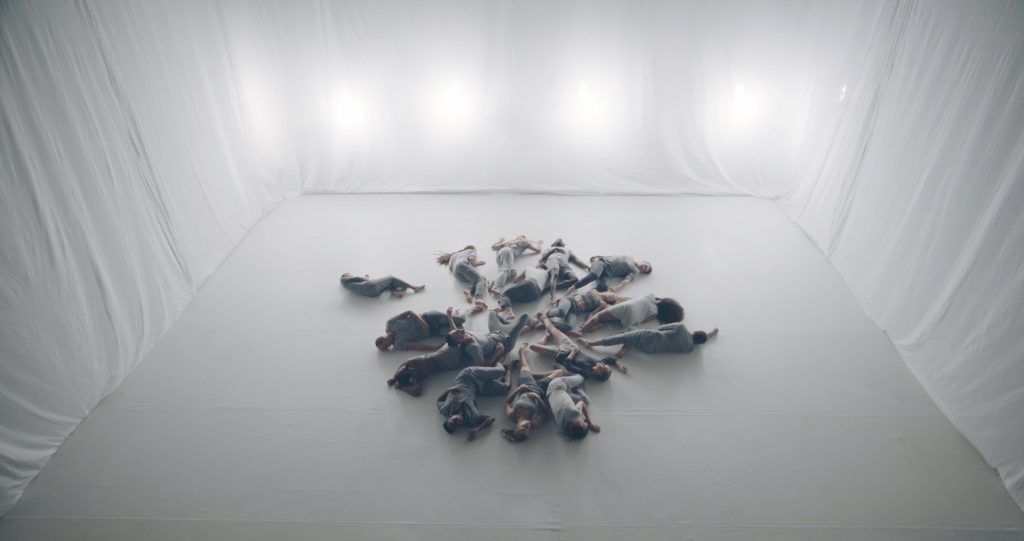
Brendan Fernandes, still from Free Fall for the Camera. Image courtesy of the artist and Monique Meloche Gallery
The film begins and ends with an overhead shot of people simply walking, as if one were standing on a balcony overlooking a courtyard watching pedestrians going about their lives. This uneventful motion is suddenly altered, the mundane shattered and halted as a woman falls to the floor. Everyone stops to look before she is helped up off the floor and they carry on. This scene repeats a few times with different a different dancer falling before Fernandes expands his theme to involve all 16 forming a circle, arms over each other’s shoulders and one by one a head is rested on a neighboring shoulder. The scene is endearing, yet oddly tense.
Lines are formed, very simple hand and arm gestures are briefly incorporated as the lines cross, join, create and X, yet none of these linger for very long. A Busby Berkley style overhead shot finds the dancers forming an opening flower. A celebration of life moving forward? Fernandes keeps returning to the opening scene with a single body falling, but shakes our world again when the entire groups hits the floor at the same time. We hear flesh hitting the floor and a few seconds of whispering transpires as if they are speaking to each other but not wanting to give away their whereabouts. The lighting for Free Fall, for the Camera shifted from the stark to disco and to resembling the flashing of the lights atop police cars at a crime scene. At the Pulse, the scene of the crime was indeed a dance nightclub.
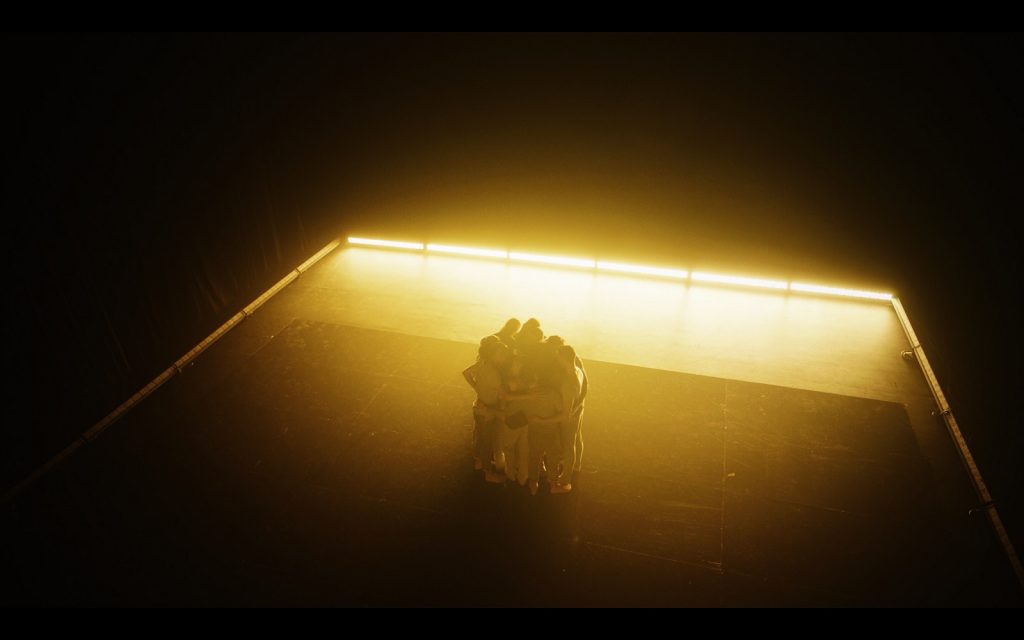
Brendan Fernandes, still from Free Fall for the Camera. Image courtesy of the artist and Monique Meloche Gallery
The shape of the film projects a sense of history repeating itself, as sadly in the case of mass shootings in America it has. As we watch from above, the camera fades out on the dancers walking and we are left wondering at what moment the next victim(s) will fall.
Fernandes was born in Nairobi, Kenya, raised in Canada and is now based in Chicago. He professionally trained as a ballet dancer and would bind his feet in order to improve his form, but unfortunately, he tore his hamstring during his senior year in college, thus ending his dance career. He has, however, become an internationally recognized artist working at the crossroads of dance and visual arts. His projects are said to address “issues of race, queer culture, migration, protest and other forms of collective movement”. Fernandes’ projects often create a space within a space and incorporate Ballet, queer dance halls and he also uses his art to protest injustice. You may read his entire bio HERE.
The discussion between Fernandes and Chambers-Letson was both enlightening and inspiring, and if it becomes available, you should seek it out and watch.
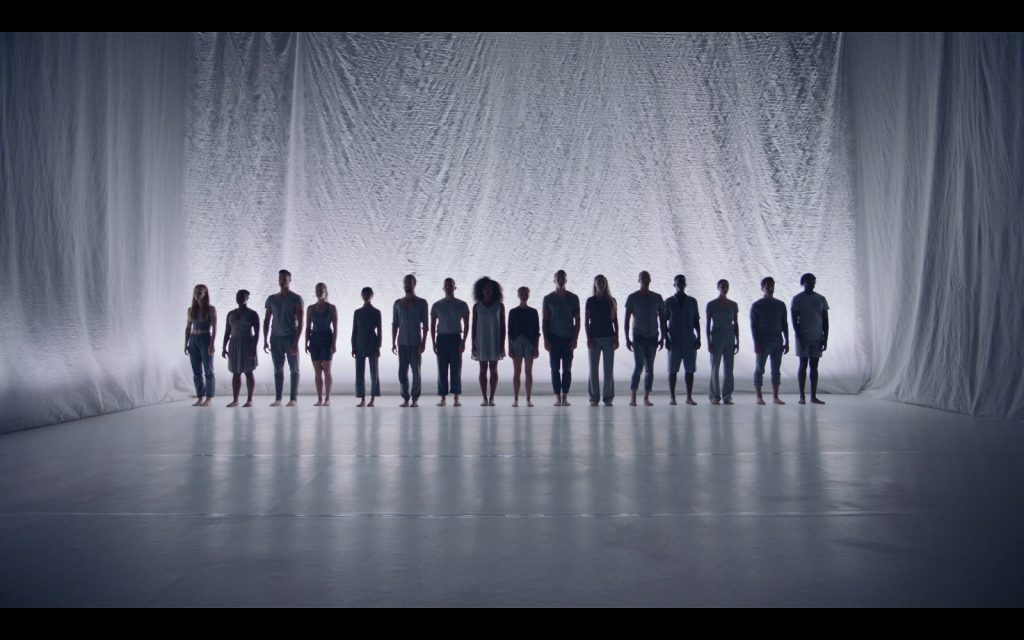
Brendan Fernandes, still from Free Fall for the Camera. Image courtesy of the artist and Monique Meloche Gallery
The cast of Free Fall, for the Camera who made walking on stage look easy and falling seem natural included Alexandria, Benjamin Landsberg, Caryn Chappell, Christopher Valentini, Connor Mitton, Elizabeth Gagnon, Halley Brentt, Kaitlin Torrance, Logan Kinney, Lonii Garnons-Williams, Natayu Mildenberger, Nicole Rose Bond, Nyda Kwasowsky, Roney Lewis, Shawn Louis, and Sol Silvestri.
Choreography for Free Fall, for Camera was edited by Michael Pierro; Sound by Alex Inglizian; and the Director of Photography was Daniel Grant.
To learn more about Brendan Fernandes and to see photos of his work, click HERE.
To learn more about Joshua Chambers-Letson, click HERE.
To visit the Getty Museum website, click HERE.
Written by Jeff Slayton for LA Dance Chronicle.
Featured image: Brendan Fernandes, still from Free Fall for the Camera. Image courtesy of the artist and Monique Meloche Gallery

